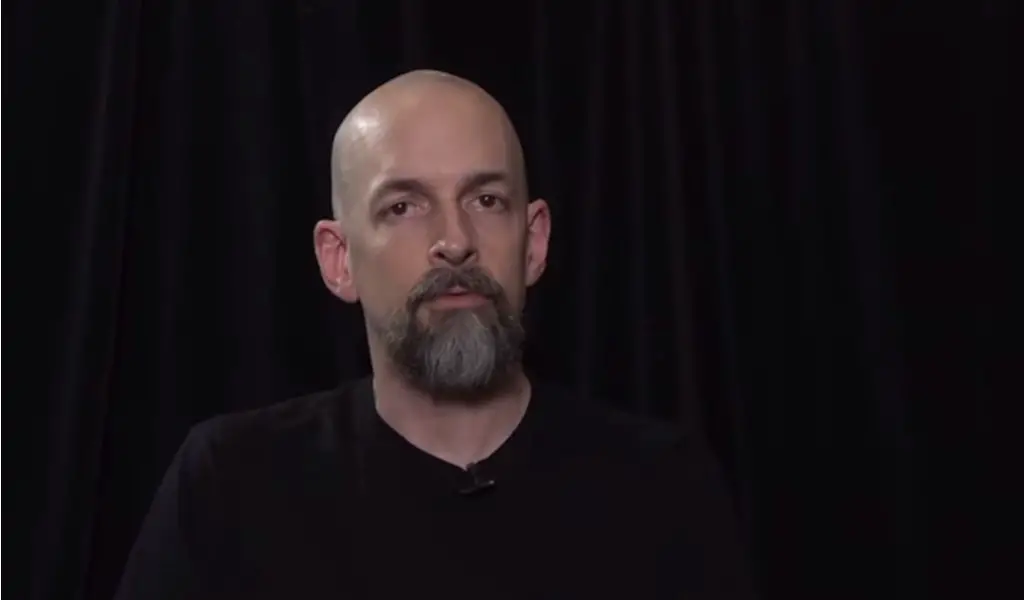It’s okay to be unsure about the metaverse. Those who are pessimistic can refer to Meta’s struggles over the past year to persuade us that we will all be living in this immersive 3D world.
Optimists can point to Meta’s new $499 Quest 3 virtual and mixed reality headset and a rival device that Apple is likely to unveil in the coming days as proof that the tech giants still support the concept of an immersive digital world.
Neal Stephenson is an optimist. The word “metaverse” was first used in his grim science fiction book Snow Crash, which was published in 1992.
“Over the past few years, it seems like a lot of things have come together,” Stephenson said in a talk at the Augmented Reality Expo on Wednesday. “These are the things that we need to have in place before we can really start building a metaverse.”
Stephenson’s personal interest has nothing to do with his book. Since the 1990s, he has worked at various start-ups, including Magic Leap, which makes augmented reality headsets. His current company, Lamina1, is working on plumbing the metaverse, which he hopes will lead to an open base that developers can use and people can visit.
It won’t be an easy sell. The talk about the metaverse in 2021 has died down a lot. Facebook changed its name to Meta, but investors don’t like how it wants to make money from the metaverse. And the Web3 movement, which wanted to create “decentralized” tools for the metaverse that would reward people who made things that could be sold in the metaverse, has had a lot of problems. This includes scams, security holes, and “rug pulling,” in which project leaders promote a cryptocurrency and then withdraw it, leaving investors with worthless assets.
Olivier Blanchard, an expert at Creative Strategies, is skeptical about the widespread use of computer-generated virtual reality (VR), augmented reality (AR), which blends computer imagery with the real world, and mixed reality (XR). , a term that includes VR and AR.
Blanchard said: “Once the AI gold rush is over and Apple gives it some direction, it will have to decide what it wants to be when it grows up if it ever wants to appeal to mainstream consumers.” “Metaverse and XR companies will need to make it clear to users how their solutions will make their lives better, not just more expensive and difficult.”
But the metaverse might not be such a hard sell anytime soon.
Apple’s long-awaited headset, which has been in development for years and is likely to be shown off at the company’s WWDC developer meetup, could sway developers to create mixed-reality apps. Apple was able to convince mobile app makers to create millions of apps for the iPhone and iPad. And the video pass-through mode on the Meta’s Quest 3 XR device will give it AR capabilities.
The metaverse still has a long way to go before it becomes as popular as the web or the metaverse in the Snow Crash book.
Snow Crash is a fun and exciting book that shows a bleak future in a fun and exciting way. The metaverse is a big part of the book, but Stephenson says the nightmare is caused by people in general. Stephenson wanted the metaverse to be a place where people could do many different things with technology.
Stephenson said: “Our first experience with the metaverse is kind of a very large market, a lowest common denominator that includes… the worst of television.” “But as we read more of the book, we see that it has been used to make beautiful works of art. Some people have spent a lot of time and care creating houses in the metaverse that are beautiful works of art, both in terms of appearance and sound.
That metaverse was all about virtual reality, but Stephenson now calls it “a three-dimensional shared virtual environment,” including AR. Snow Crash is known for his metaverse, but there are “gargoyle” characters in the real world of the book as well. These are super tech people who hide behind AR glasses and are always connected to data sources.
Stephenson said he was amazed by the progress in VR, AR and XR, especially with game engine tools like Unity and Unreal Engine being widely used for 3D graphics and gaming. But so far, there’s not enough to do in the metaverse to hang out there.
Stephenson said, “If we’re going to have a metaverse that millions or billions of people are using all the time, there have to be good things to do in the metaverse.” The goal of Lamina1 is to improve the tools of the metaverse so that developers and other producers can create these types of experiences. That includes blockchain and NFT technology, which has lost much of its luster since 2021, when currencies were more valuable.
Lamina1 is building relationships to make the metaverse more real. One of them works for Mira, which scans the real world to make a virtual version of it, but most of the others work for game creators.
Stephenson helped start Lumina1 in 2022, but has since taken a step back. He’s still the boss, but in 2023, he said, he’s back to writing books, too.
At the Augmented World Expo, there are a lot of AR fans. The organizer of the show, AugmentedReality.org CEO Ori Inbar, shared the stage with a virtual form of himself that appeared almost as big as in real life and was displayed in a telepresence box made by ARHT Media. Inbar spent most of his 20 minutes on stage at the show endorsing the technology and said it still works well despite everyone talking about artificial intelligence (AI).
“We won’t stop until XR is used by everyone, everywhere, all the time.”
Subscribe to our latest newsletter
To read our exclusive content, sign up now. $5/month, $50/year
Categories: Technology
Source: vtt.edu.vn
